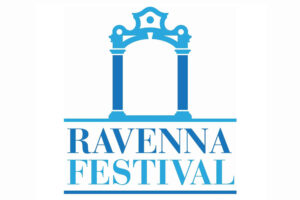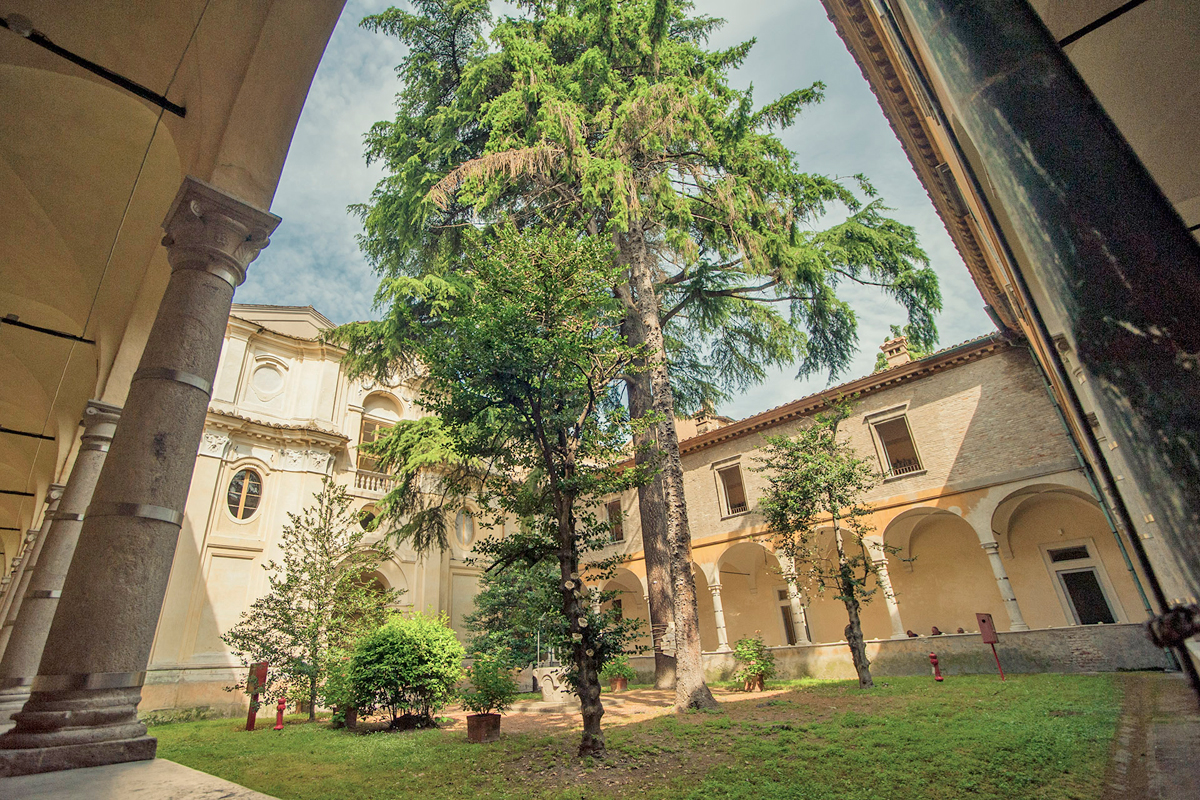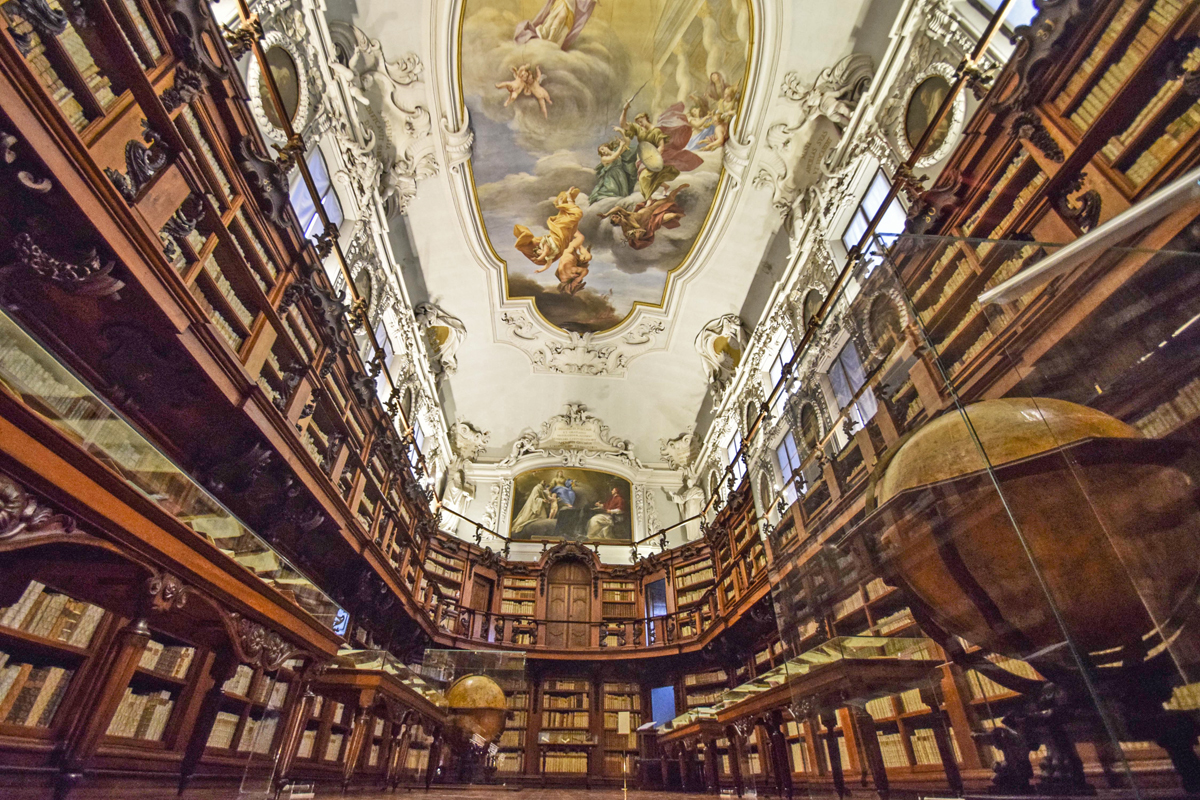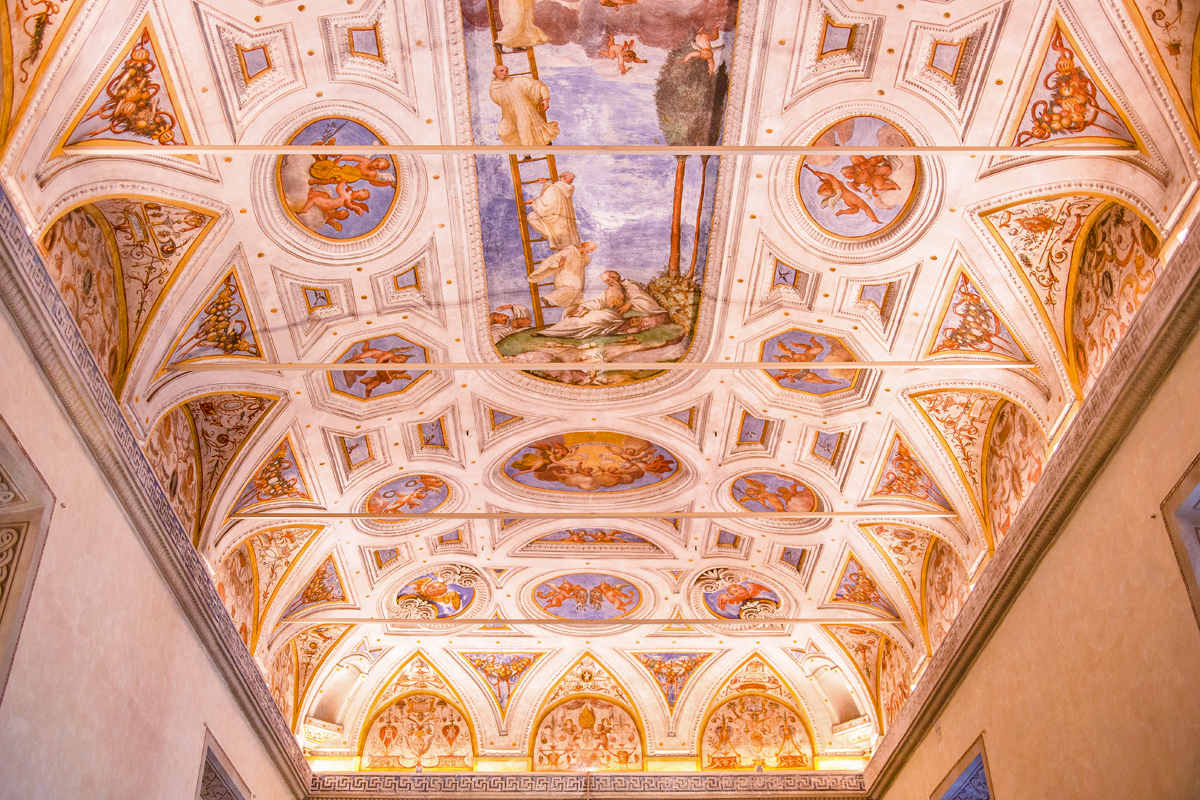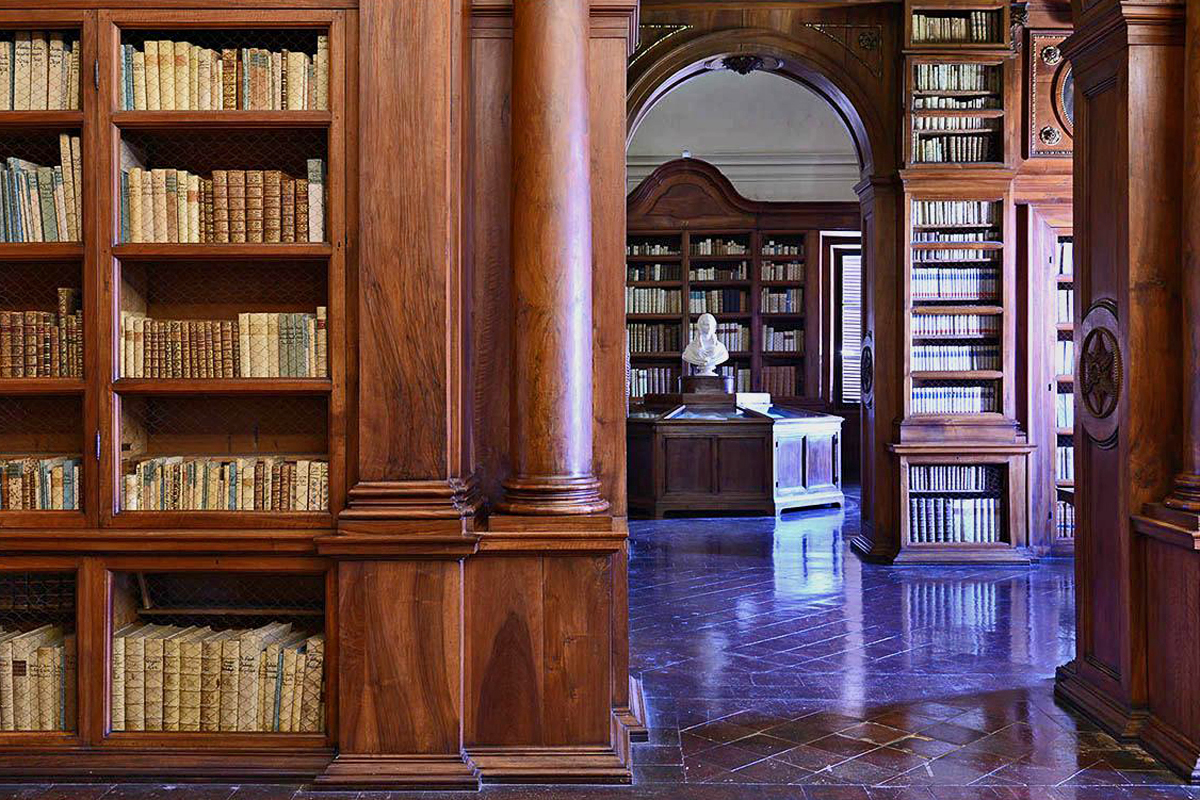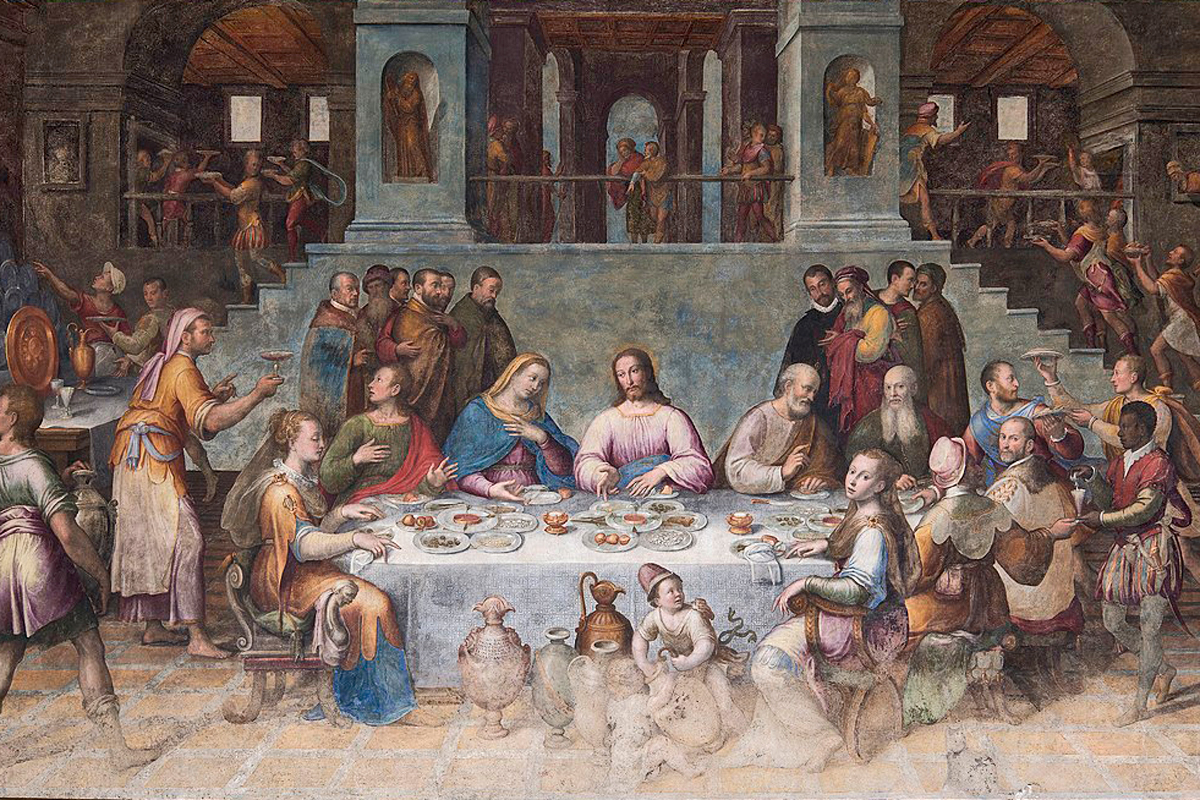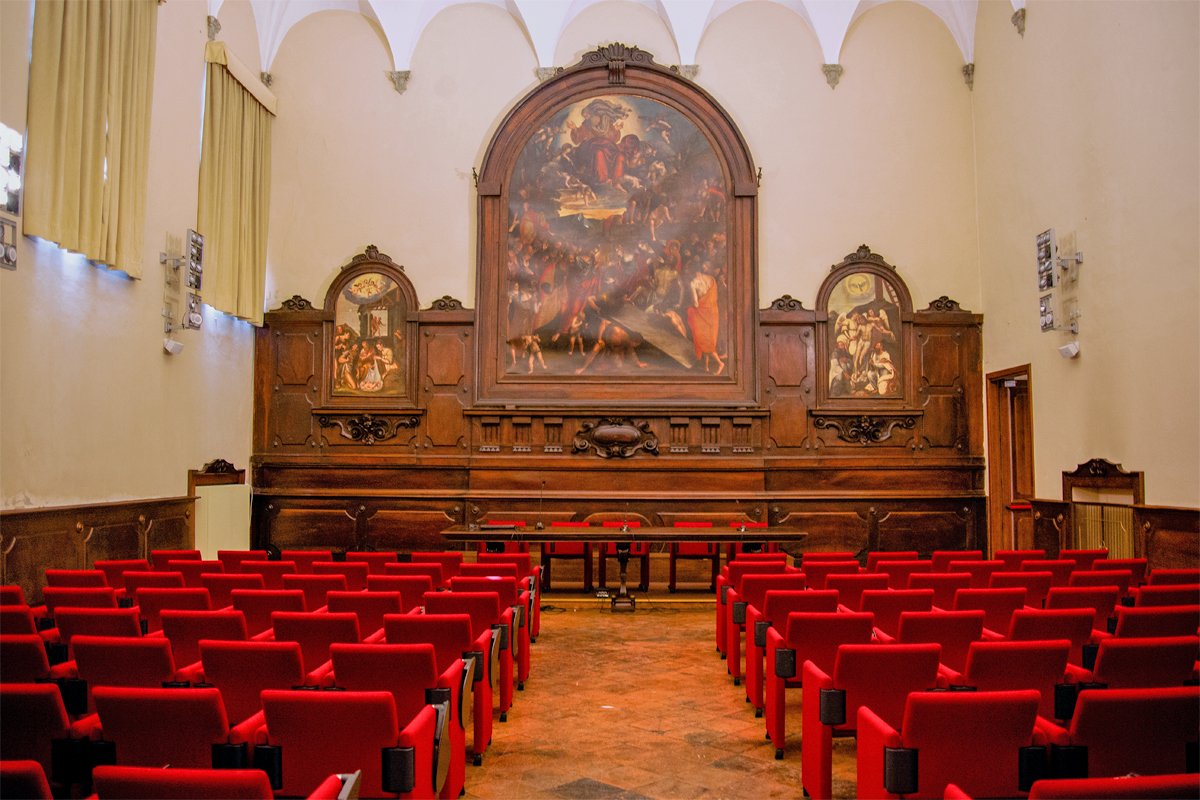In the heart of Ravenna, lies in all its beauty the CLASSENSE LIBRARY, one of the twenty greatest librarian institutions in Italy.
Housed inside a Camaldolese monastery built from 1512 onwards, it is a real architectural and artistic jewel. Every year it attracts hundreds of visitors, who come here to admire its rooms and the treasures it preserves.
The original complex had made the abbey one of the greatest and most imposing buildings of the Camaldolese Order. Besides that, the library — as it appears today — is the result of continuous changes and improvements.
Among the many happenings, the Napoleonic suppression of the monastic goods in 1803 seriously marked the building’s history, since it was elected Ravenna City Library, receiving in this way all the book holdings from the most important religious complexes of the city.
Today, the library is a dynamic place open to the public, a reference point for students and scholars, connoisseurs of art and culture in general.
Its vast heritage of ancient, modern and contemporary books is one of the most important in Italy.
Over the years the library has been organizing many meetings, conferences as well as art and book exhibitions with in-depth didactic and research meetings.
The rooms of the Classense Library
Inside the rooms and along the hallways of the library, it is possible to admire works of art by artists dating back between the 16th and the 18th century.
Among the most fascinating rooms is the Aula Magna, built between the 17th and the 18th century by abbot Pietro Canneti. It is embellished with statues, stuccoes and wooden shelves finely engraved and decorated with frescoes by Francesco Mancini.
Not to be missed are also the monumental cloisters, the old sacristy of the Church of San Romualdo (today Sala Muratori) and the great 16th-century refectory, created by abbot Pietro Bagnoli, known since 1921 as “Sala Dantesca” (Dantesque Room).
You can access this room through a vestibule, by crossing a wooden structure supported on both sides by a statue. It was realised by Peruzzi, who also created the wooden choir stalls of the large refectory in 1581.
The painting “Le nozze di Cana” (Marriage at Cana) by Luca Longhi decorating the front wall is of outstanding beauty. The room also features a fine ceiling, painted by Longhi’s pupils, which recalls San Romualdo, the forefather of the Camaldolese Order.
In this room, the most important conferences dedicated to the Supreme Poet take place every year. Also, the so-called Letture dantesche (Dantesque readings) take place in this splendid venue, welcoming the most illustrious lecturers at international level.
The book treasures of the library
A vast collection of volumes of various documentary categories are preserved inside the library. The collection consists of about 800,000 printed books, ancient and modern alike, including manuscripts, engravings, maps, photographies, storage documents and multimedia materials.
The section dedicated to the Ancient Collections preserves volumes dating back from the 15th to the 18th century and about 750 manuscripts, half of which dating back between the 10th and the 16th century.
Part of the book heritage was originally preserved in the ancient Abbey of Classe, to which the Classense Library owes its name.
After the battle of Ravenna occurred in 1512, the area was deemed to be no more safe; for this reason, the Camaldolese Order decided to move within the city walls with all the treasures.
The treasures include the valuable collection of texts by Petrarca’s Canzoniere and Trionfi, an original painting by Sandro Botticelli, and the only extant manuscript with the eleven comedies by Aristophanes.
It is called Ravenna Code 429, dating back to the half of the 10th century and arrived in the West in 1423 thanks to Giovanni Aurispa, who saved this and many other manuscripts from the imminent fall of Constantinople, taking them to Florence, in the hands of Niccolò de’ Niccoli.
Lastly, a special mention goes to the Dantesque Collection, the most complete collection of first and rare editions dedicated to the works of Dante Alighieri, bought by the great Florentine bibliophile and editor Leo S. Olschki.


